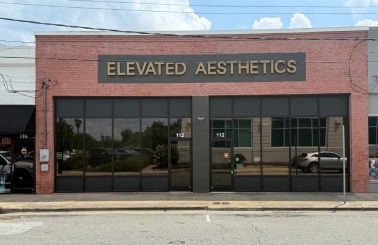The lips are one of the first giveaways of someone’s age, and as Gomi & Imamura stated in their 2020 paper regarding lip aging, “a growing body of literature has recognized the importance of the [lip] to facial attractiveness in terms of factors such as height and the ratio of upper to lower [lip] heights.”
What happens to the perioral area as we age:
Bony changes
-
- Decrease in the angle of the maxilla (the upper cheekbone) and its height, which results in the lip being positioned more towards the back of the head (posterior positioning) and deepening of the nasolabial folds.
- Tooth wear & loss causes alveolar ridge (where the gums and the jawbone meet) resorption and bone loss leading to decreased anterior lip projection (lips look thinner and inverted).
Soft tissue changes surrounding lips
-
- Loss of collagen and elastin leading to reduced elasticity of skin.
- Reduction in glycosaminoglycans (our intrinsic hyaluronic acid) causing water loss and dry skin.
- Repeated perioral muscle activity resulting in lines around the mouth & lips
Lips thin out
-
- Lip height significantly decreases
- Lip width increases
- Cupid’s bow becomes flatter
- Outline becomes more ambiguous
- Hyaluronan (our intrinsic version of hyaluronic acid and the most abundant sugar in the dermis that creates volume) decreases with age as a result of both decreased synthesis and increased degradation.
- Decrease of abundance of collagen (in similar fashion to skin) – young lips have dense, regularly arranged collagen fiber bundles but mature lips have thin, poorly organized swollen collagen fibers
Muscles around the mouth change
-
- Orbicularis Oris muscle atrophies and the muscle fibers inside the lip thin out
- Angle of the tip of the orbicularis oris muscle (OOM) in the lip curves upward in younger lips and becomes flatter with age
- Atrophy of OOM results in the philtrum column to elongate
- Depressor Angularis Oris muscle (DAO) on either side pull down on the oral commissures more in an older/mature face, resulting in a frowned appearance

What to do:
Treat your lips like you do your skin! “Intrinsic ageing and photodamage [sun damage] are generally considered as major factors contributing to age‐dependent decreases in hyaluronan and collagen” (Gomi & Imamura, 2020)
- While the skin of the lips is thinner and more delicate, so regular anti-aging serums/creams like Vitamin C & retinols can’t be used here, we CAN use certain hyaluronic acids if approved for lips here. We LOVE the latest product to come out from Hydrinity, LUXE Lip Hydrator! We have tons in stock.
- Wear sunscreen on and around your lips. All day, erry day, like I always say!
- Treat the surrounding skin around your lips like any other skin with medical grade skincare
Restore/Repair
- Get neurotoxin to the upper OOM (but only if active)
- Get lip filler that restores the hydration and the vermilion border, as well as recreates the philtral columns.
- Get perioral filler to the vertical lines above the lip with a new technique Tara & Megan recently learned at the Revanesse Retreat!
- Get microneedling or some other energy-based device treatment.
We are ready to help you!
XOXO,
References
Foutsizoglou, S. (2017). Anatomy of the ageing lip. PMFA NEWS 2017; 4(2). https://www.thepmfajournal.com/features/post/anatomy-of-the-ageing-lip
Gomi T, Imamura T. Comprehensive histological investigation of age-related changes in dermal extracellular matrix and muscle fibers in the upper lip vermilion. Int J Cosmet Sci. 2020 Aug;42(4):359-368. doi: 10.1111/ics.12622. Epub 2020 Jun 11. PMID: 32274802; PMCID: PMC7496161.
Seo JY, Leem S, Kim H, You SW, Kim Y, Kang NG. Image-based investigation of lip aging features in a large number of Korean women. Skin Res Technol. 2024 Jan;30(1):e13563. doi: 10.1111/srt.13563. PMID: 38196165; PMCID: PMC10776892.
Shang, J., Feng, X., Chen, Y., Gu, Z., & Liu, Y. (2024). Human lip vermilion: Physiology and age-related changes. Journal of Cosmetic Dermatology, 23(8), 2676-2680. https://doi.org/10.1111/jocd.16317


